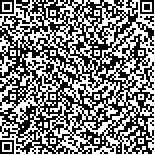王丹阳,王留根,杨俊锋,等.间歇经口至食管管饲法在脑出血后气管切开患者中的临床应用[J].中华物理医学与康复杂志,2022,44(12):1079-1083
扫码阅读全文

|
| 间歇经口至食管管饲法在脑出血后气管切开患者中的临床应用 |
|
| |
| DOI:10.3760/cma.j.issn.0254-1424.2022.12.005 |
| 中文关键词: 间歇经口至食管管饲法 脑出血 气管切开 营养不良 |
| 英文关键词: Tube feeding Cerebral hemorrhage Tracheotomy Malnutrition |
| 基金项目: |
|
| 摘要点击次数: 4462 |
| 全文下载次数: 5049 |
| 中文摘要: |
| 目的 观察间歇经口至食管管饲法(IOE)对脑出血后气管切开患者营养状况、气切套管拔管率、肺部感染及神经功能恢复的影响。 方法 采用随机数字表法将126例脑出血后气管切开患者分为IOE组(65例)和鼻胃管管饲(NGT)组(61例)。2组患者均给予基础药物治疗及综合康复干预(包括偏瘫肢体训练、吞咽训练、肺功能训练等);IOE组、NGT组患者在此基础上分别给予IOE或NGT营养支持。于入科时、治疗4周后对2组患者进行疗效评定,具体指标包括体重指数(BMI)、血红蛋白(Hb)、白蛋白(ALB)、前白蛋白(PA)、肌酐身高指数(CHI)、气切套管拔管率及带管时间、临床肺部感染(CPIS)评分、美国国立卫生研究院卒中量表(NIHSS)评分及并发症发生率等。 结果 治疗4周后IOE组患者各项营养指标、气切套管拔管率(90.76%)和带管时间[(15.96±3.86)d]、CPIS评分[(3.00±1.69)分]、NIHSS评分[(11.86±4.08)分]及并发症总体发生率均明显优于NGT组水平(P<0.05)。 结论 IOE营养支持较NGT营养支持能更有效改善脑出血后气管切开患者的营养状况及神经功能,减少肺部感染及相关并发症发生,有助于患者尽早安全地拔除气切套管,加速康复进程。 |
| 英文摘要: |
| Objective To explore the effects of intermittent oral-esophageal tube feeding (IOE) on cerebral hemorrhage (CH) survivors receiving a tracheotomy. Methods A total of 126 CH patients undergoing tracheotomy were randomly divided into an IOE group (n=65) and a nasogastric tube feeding (NGT) group (n=61). The feeding continued for 4 weeks along with medication and thorough rehabilitation interventions (including hemiplegic limb training, swallowing training, and pulmonary function training). Before and after the treatment, the body mass index, hemoglobin, albumin, proalbumin, creatinine height index, extubation rate and intubation time of the tracheotomy, as well as the incidence of complications were evaluated for both groups. Both groups were also assessed using the clinical pulmonary infection scale (CPIS) and National Institutes of Health stroke scale (NIHSS). Results After the 4 weeks the nutrition indexes, average extubation rate (90.76%) and intubation time [(15.96±3.86)d], CPIS score (3.00±1.69), NIHSS score (11.86±4.08) and the overall incidence of complications in the IOE group were all significantly better than the NGT group′s averages. Conclusions Where feasible, intermittent oro-esophageal tube feeding is superior to nasogastric tube feeding of cerebral hemorrhage patients undergoing tracheotomy. It reduces the risk of pulmonary infection and other complications, resulting in early removal of the tracheotomy cannula and quicker recovery. |
|
查看全文
查看/发表评论 下载PDF阅读器 |
| 关闭 |
|
|
|